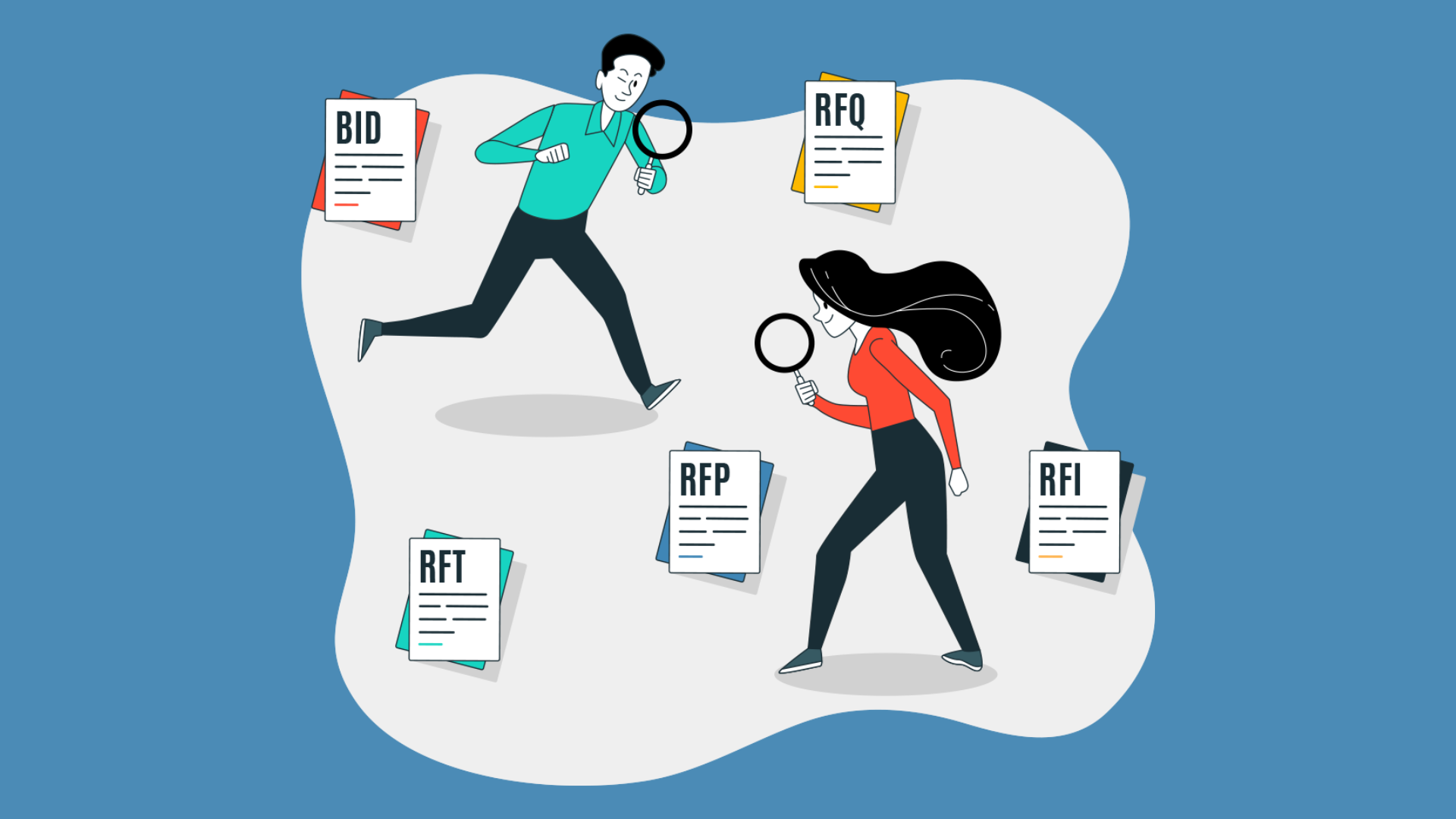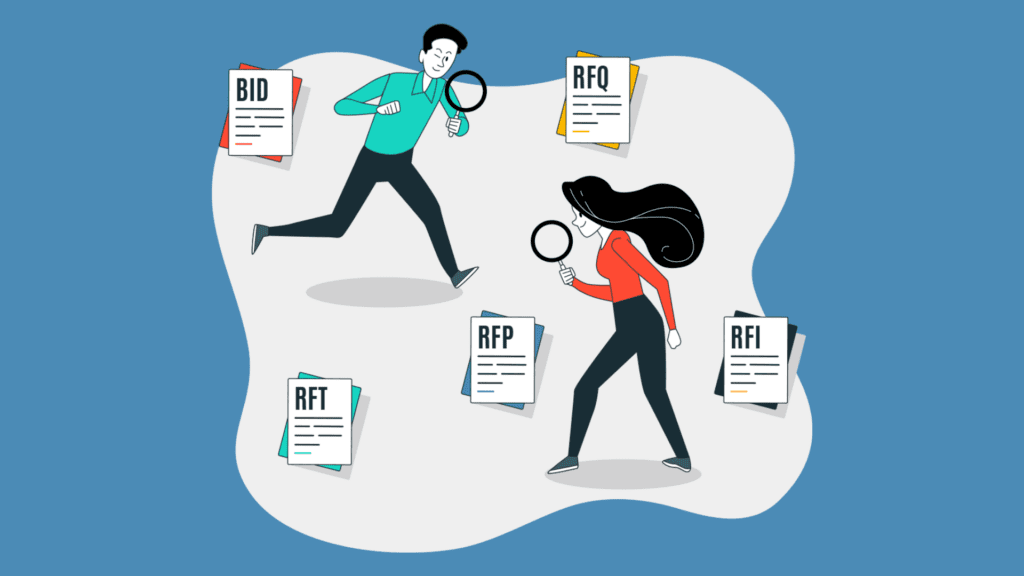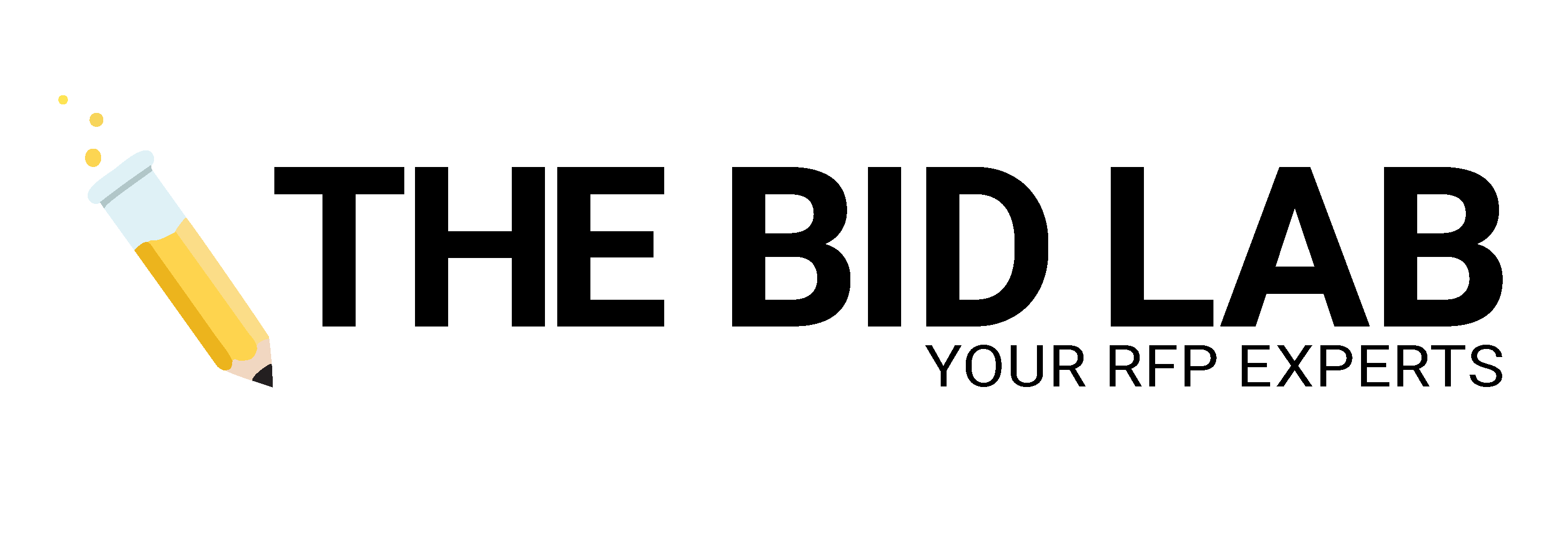RFPs vs. RFIs: What’s The Difference?


The world of bidding on government projects can seem daunting! For one thing, there are a myriad of bid document types. To make matters worse, similar or identical documents often have different names or abbreviations. It all depends on the preferences of the issuing entity! You might come across Requests for Information, Requests for Tender, Requests for Bids, Requests for Queries, IFBs and more — a real bidding alphabet soup! Like, what is an RFI? And what is the difference between an RFI and everything else?
Need some clarity as you start planning your growth strategy for the coming year? Well, we’re here for you. In the following article, we’ll compare two of the most common government bid documents. These are a Request for Proposal (RFP) and a Request for Information (RFI). So, when it comes to an RFP vs. an RFI: what’s the difference, and why does it matter for your company?
Request for Proposal (RFP)
We couldn’t possibly begin to describe the differences between RFPs and RFIs without first describing what an RFP is. An RFP is a business document issued by an agency to solicit proposals from potential vendors for a known project solution. The RFP describes in detail what the entity is looking for, outlines the criteria for evaluating proposals, and lists pertinent information regarding dates and deadlines for submission. With RFPs, an agency is usually familiar with possible vendors and has a clear understanding of the project for which they are issuing an RFP. In other words, they are looking for a specific solution.
Request for Information (RFI)
A Request for Information, or RFI, is often used by government entities (states, municipalities, government agencies, etc.) when the solution to a particular problem isn’t immediately apparent. Thus, an RFI is published solely in order to gather information from potential vendors on how a particular issue might be solved.

RFPs vs. RFIs: What’s The Difference?
Below we further break down what differentiates an RFP from an RFI to assist you in deciding whether your business should — and is qualified to — respond to these types of opportunities.
RFIs are not an invitation to solicit bids.
As opposed to the definition of an RFP (a Request for Proposal), the purpose of an RFI isn’t to solicit bids and hire a vendor to actually solve the issue. In fact, some RFIs will include language explicitly stating that it’s not an invitation to bid. Rather, this document is more of a hypothetical exercise to understand what the possible solutions might be. Many companies use RFIs to gain general information about vendors and to narrow down their project’s focus and scope of work. As such, the questions in an RFI are typically high-level, broad and somewhat open-ended.
RFI language can have its quirks.
An RFI will typically describe an issue or problem and ask for expertise regarding how to solve it. For example, a typical RFI might include a statement such as:
“The County is seeking information from qualified firms who can provide digital content services that will enable public libraries to lend popular audiobooks and e-books via the library’s website. The responses resulting from this RFI will be utilized by the County to develop an understanding of available market options.”
The County isn’t actually asking for bids, they just want to understand market options that might provide what they’re seeking.
Are RFIs still worth the effort of responding?
“Hold on a second,” you might be thinking at this point. “Since an RFI is only asking for possible solutions instead of actual bids, why should I spend my time — and therefore money — responding if there’s nothing to win?”
While this is a valid question, the answer is simple. In many cases, the issuer utilizes the vendor responses to create an RFP! First, they’ll often review the solutions provided by the responses to the RFI. Thereafter, they will develop an RFP seeking proposals on the project. In fact, some RFIs will explicitly state that responses to the RFI will be used to craft a future RFP. Here’s an example of such language:
“Responses will not be treated as proposals, but will be used to create a subsequent Request for Proposal (RFP).”
It’s favorable to businesses that provide quality, useful responses to an RFI. After all, it was the business’s answers to the RFI that helped create the RFP in the first place! Thus, by responding to an RFI, a vendor can be the “expert” that helps define the RFP. Rather than being a waste of time, in reality, responding to an RFI can set a vendor up to WIN an RFP!
Ready to respond to an RFI or an RFP?
The world of government procurement can seem overwhelming due to the dizzying array of documents, procedures and industry lingo. So, why decode complex language in a door-stopping document all on your own? When it comes to understanding the nuances of RFPs and RFIs, The Bid Lab has you covered. We can even set you up with Bid Banana, our user-friendly RFP search engine! Furthermore, we won’t miss any of the details that could cost you the bid. So if you need help navigating these complexities, start by scheduling a free consultation today! You can also call us at 1-844-4BIDLAB to discuss how to start bidding on profitable government projects.
Learn more about RFPs and bidding strategies in these related articles:
